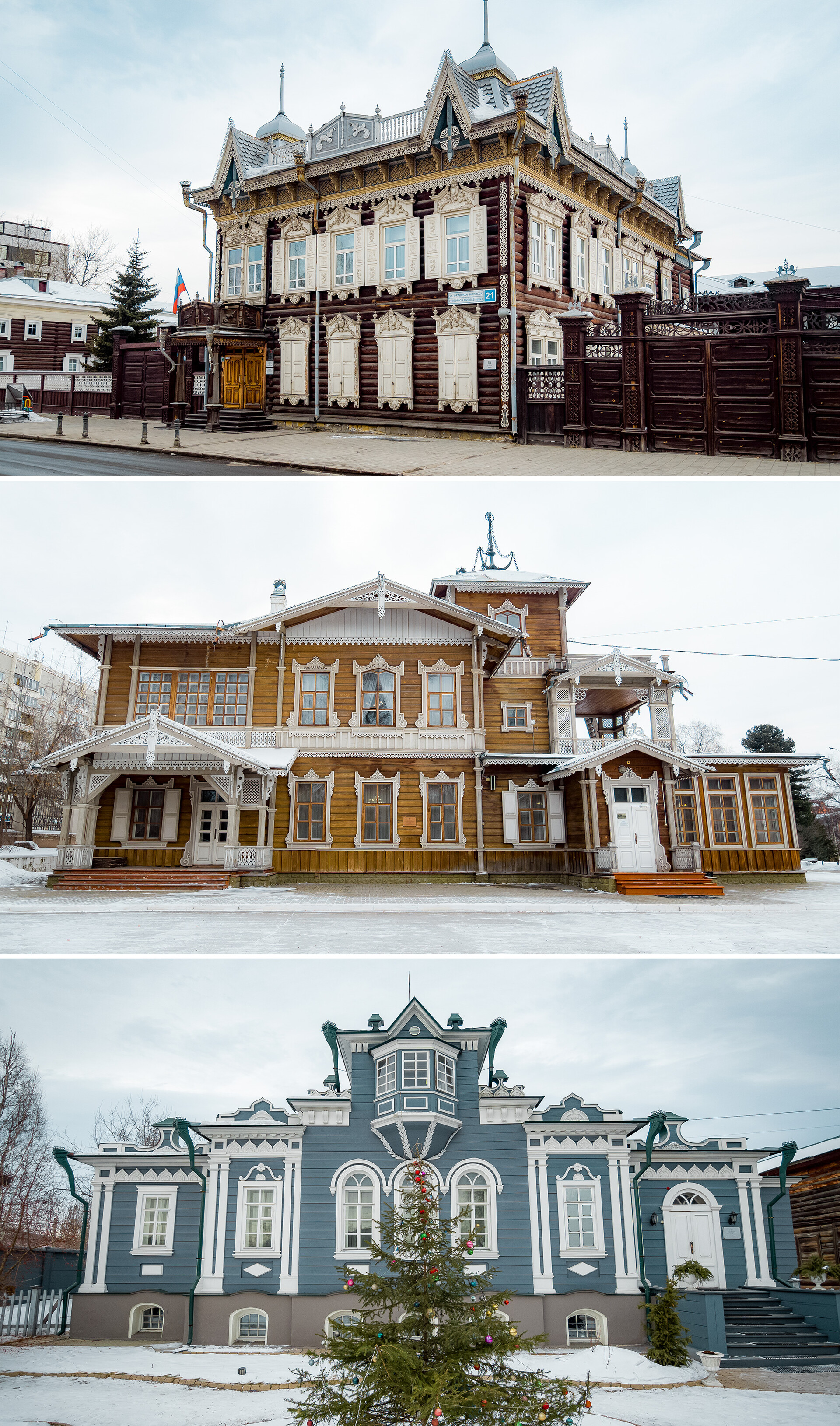

The Trans-Siberian Railway was built in the late 19th century as separate parts, which were later connected. There was a natural obstacle on the way - Lake Baikal. Before opening of Circum-Baikal Railroad, ‘Transsib’ passengers crossed the lake by means of ferries. The ‘Angara’ icebreaker once paved the way for the passenger ferry in winter.
It was made in the UK, floated in 1900 in the settlement of Listvyanka and was in operation until 1906. After the 1917 Bolshevik Revolution, it was repurposed for passenger transportation and it managed to participate in the events of the Civil War. Today, the icebreaker is moored and a museum is set up inside.

Irkutsk has preserved a huge number of wooden houses right in the center of the city. Among them are both residential apartment buildings and estates, all steeped in history.
Especially notable is merchant Apolos Shastin’s manor on Engels Street, otherwise known as ‘Lace House’. Such incredible carved platbands are very rare.
There are also estates that are connected with the names of Decembrists. In the 19th century, Sergei Trubetskoy and Sergei Volkonsky, together with their families, lived there in exile. Personal belongings and documents of that epoch have been preserved in their houses.
Even more houses can be seen in the Taltsy ethnographic museum 50 km from the city.

Alexander Rastorguev's military-historical museum is located near the city's landfill and all the exhibits are made of waste.
Inside are fantastic machines like from the ‘Transformers’ franchise, as well as a whole battlefield of alien monsters - ‘aliens’ against ‘predators’! The central place is occupied by a reconstruction of battles of the Great Patriotic War, using real tanks, airplanes and artillery.

Irkutsk was founded in the middle of the 17th century on the great Siberian Angara River. There, on the embankment in the city center, you can feel the breath of history. Walk along the Lower Embankment, which stretches for 900 meters. At the very top, you will see the Moscow Gate, the Cathedral of Epiphany and the monument to the founder of the city. Perhaps the most famous views of Irkutsk can be found there!

Like many other Siberian cities, Irkutsk began with an ‘ostrog’ (a small wooden fort). In 1661, it was located just on the bank of the Angara River and 20 Cossacks served in it. But, a few years later, it began to deteriorate, so they decided to erect a large Irkutsk Kremlin closer to the current city center.
At that time, the city was predominantly wooden and there were constant fires. The kremlin also burned from time to time. It was rebuilt and, by the end of the 18th century, they decided to dismantle it completely and put a garden around it.
The only building that has remained from the kremlin and survived to this day - the Church of the Savior, laid in 1706. It is also the oldest stone construction in Eastern Siberia.

The mansion of Siberian millionaire merchant Alexander Vtorov resembles a stone ‘terem’ (a Russian ‘fairytale’ house). This neo-Russian style was very popular among the people in his circle at the end of the 19th century. It was designed by Moscow architects. But what cost it took to build it in faraway Irkutsk! There are still legends among the locals about the treasures and underground passages of this house.
The second no less bright stone mansion is also located in the center of Irkutsk - it is the house of merchant Isaiah Feinberg. Beautiful turrets, balconies and a painted façade - but what made it really stand out was that it already had a water supply and central stove heating in 1902, while the city water supply system only appeared a few years later.

More than 130 ethnic peoples live in Irkutsk Region and the city itself has many temples of different religions. There are Orthodox cathedrals, Catholic churches and Buddhist datsans.
The Kazan Church is one of the most impressive temples in Siberia. It was built on the outskirts of the city in 1892 on Easter on the donations of local residents. The best carvers, icon painters and craftsmen worked on the construction.
In the Soviet years, a souvenir factory was set up in it and, only in the 1980s, was it restored again on donations. Today, services are regularly held in the church again.
Dear readers,
Our website and social media accounts are under threat of being restricted or banned, due to the current circumstances. So, to keep up with our latest content, simply do the following:
If using any of Russia Beyond's content, partly or in full, always provide an active hyperlink to the original material.
Subscribe
to our newsletter!
Get the week's best stories straight to your inbox